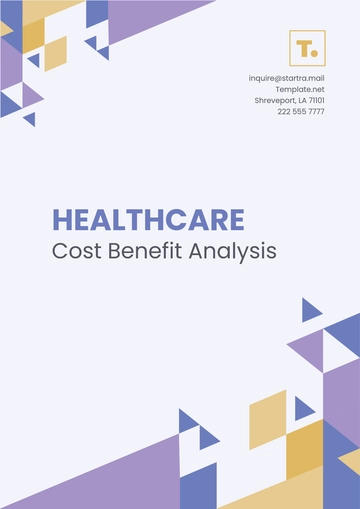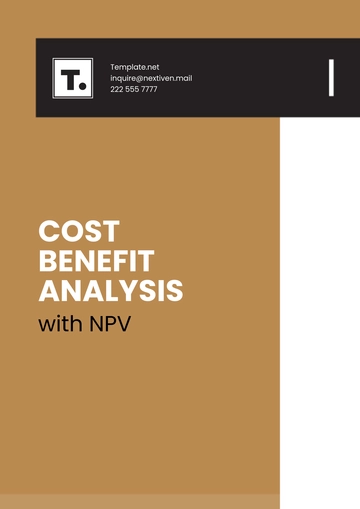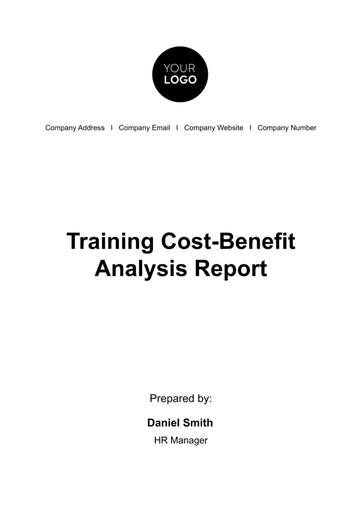Free Travel Agency Profitability Analysis

I. Revenue Analysis
Explore the financial pulse of [Your Company Name] as we dissect revenue sources: ticket sales, hotel bookings, tour packages, and ancillary services. This scrutiny unveils revenue trends, highlighting the star performers and areas needing improvement. By deciphering these patterns, we sharpen our understanding of financial dynamics and refine pricing strategies for optimal profitability. Join us on this journey of financial discovery, where insights guide strategic decisions toward sustainable growth.
The table below illuminates revenue trends, guiding strategic decisions to optimize profitability and foster sustainable growth.
Month | Ticket Sales (USD) | Hotel Bookings (USD) | Tour Packages (USD) | Ancillary Services (USD) |
|---|---|---|---|---|
January | $20,000 | $15,000 | $10,000 | $5,000 |
February | $22,000 | $16,000 | $11,000 | $6,000 |
March | $24,000 | $17,000 | $12,000 | $7,000 |
April | $26,000 | $18,000 | $13,000 | $8,000 |
May | $28,000 | $19,000 | $14,000 | $9,000 |
II. Cost of Goods Sold (COGS)
Dive into the backbone of [Your Company Name]'s financial framework with our Cost of Goods Sold (COGS) analysis. Unveiling the direct costs entwined with delivering our services—be it airline tickets, hotel accommodations, transportation, or tour expenses—this section scrutinizes cost efficiency and highlights areas of significant expenditure. By dissecting these foundational expenses, we gain insights essential for strategic cost management and operational optimization, ensuring financial resilience and sustained profitability.
Expense Category | Amount (USD) |
|---|---|
Airline Tickets | $35,000 |
Hotel Accommodations | $25,000 |
Transportation | $15,000 |
Tour Expenses | $10,000 |
Total COGS | $85,000 |
This table outlines the direct costs associated with delivering the agency's services, including airline tickets, hotel accommodations, transportation, and tour expenses. The total COGS represents the aggregate amount expended in facilitating these services, providing insight into the cost efficiency of operations.
III. Operating Expenses
Embark on a journey through the operational landscape of [Your Company Name], where we unveil the intricacies of our Operating Expenses. Beyond direct costs lie the indirect expenditures fueling our agency's daily operations—salaries, rent, utilities, marketing expenses, insurance, and administrative costs. This section meticulously analyzes these expenses, offering insights into areas ripe for cost-saving measures. By optimizing our operational efficiency, we pave the way for enhanced profitability and sustainable growth, ensuring a robust financial foundation for our enterprise.
The table below delineates the indirect costs involved in running the travel agency, encompassing salaries, rent, utilities, marketing expenses, insurance, and administrative costs. The total operating expenses represent the aggregate expenditure required to sustain daily operations, serving as a vital metric for assessing operational efficiency and identifying opportunities for cost optimization.
Column 1 | Column 2 |
|---|---|
Salaries | $40,000 |
Rent | $10,000 |
Utilities | $5,000 |
Marketing Expenses | $8,000 |
Insurance | $7,000 |
Administrative Costs | $6,000 |
Total Operating Expenses | $76,000 |
IV. Gross Profit Margin
Explore the Gross Profit Margin, a pivotal metric revealing how efficiently [Your Company Name] generates profit from core services. It represents the
percentage of revenue surpassing the Cost of Goods Sold (COGS), offering insights into pricing strategies and cost management. This analysis guides strategic decisions, ensuring optimal profitability and operational efficiency.
The pie chart showcases the financial distribution within [Your Company Name], portraying two distinct segments: Gross Profit and Cost of Goods Sold (COGS). The larger segment, representing COGS at approximately 54% of the pie, signifies direct expenses encompassing airline tickets, accommodations, and operational costs. In contrast, the smaller segment denotes Gross Profit, constituting around 46% of the chart, reflecting revenue retained after COGS deduction. This visual representation underscores the substantial allocation of resources towards delivering services and emphasizes the imperative of maximizing Gross Profit to enhance overall profitability and operational efficiency.
V. Operating Profit Margin
Delve into the heart of [Your Company Name]'s financial performance with the Operating Profit Margin analysis. This critical metric unveils the agency's efficiency in converting revenue into profit after deducting both Cost of Goods Sold and operating expenses. Offering a snapshot of operational efficiency and profitability, the operating profit margin guides strategic decisions, highlighting areas of strength and opportunities for improvement in cost control and revenue management.
The line graph illustrates the progression of [Your Company Name]'s Operating Profit Margin across consecutive months. Each point on the graph corresponds to a specific month, with the x-axis representing time and the y-axis indicating the Operating Profit Margin percentage. The line connecting these points shows how the margin fluctuates over time. In this dataset, the margin starts at 20% in January, rises to 26% in May, showing fluctuations in operational efficiency and profitability over the five-month period.
VI. Net Profit Margin
Dive into the core of [Your Company Name]'s financial health with the Net Profit Margin analysis. This crucial metric unveils the agency's bottom-line profitability by revealing the percentage of revenue retained as profit after deducting all expenses, including taxes and interest. As a key indicator of financial performance and sustainability, analyzing the net profit margin provides invaluable insights essential for strategic decision-making and ensuring the long-term viability of the business.
The bar graph illustrates the Net Profit Margin across consecutive months for [Your Company Name]. Each bar represents a specific month, with the height indicating the corresponding Net Profit Margin percentage. The graph allows easy comparison of profitability trends over time, showing variations from January's 15% to May's 20%. This visual representation aids in assessing the agency's bottom-line profitability and financial performance across the five-month period.
VII. Financial Ratios and Key Performance Indicators (KPIs):
Delve into the financial landscape of [Your Company Name] with our comprehensive analysis of Financial Ratios and Key Performance Indicators (KPIs). Tailored specifically to the travel agency industry, this section offers a detailed examination of essential metrics that provide valuable insights into various aspects of the agency's operations and performance.
Essential Metrics
Return on Investment (ROI): ROI measures the profitability of investments relative to their cost. It evaluates the efficiency of capital allocation and investment decisions, reflecting how effectively the agency generates returns from its investments.
Asset Turnover Ratio: This metric assesses how efficiently the agency utilizes its assets to generate revenue. It reflects the effectiveness of asset management and operational efficiency, indicating the agency's ability to generate sales relative to its asset base.
Debt-to-Equity Ratio: The Debt-to-Equity Ratio evaluates the agency's capital structure and financial leverage by comparing its debt to its equity. It provides insights into the agency's risk exposure and financial stability, highlighting the proportion of financing provided by creditors versus shareholders.
Average Transaction Value (ATV): ATV determines the average value of transactions processed by the agency. It reflects customer spending behavior and sales performance, allowing the agency to identify trends in customer purchasing patterns, optimize pricing strategies, and enhance revenue generation.
In conclusion, our Travel Agency Profitability Analysis has provided a comprehensive examination of [Your Company Name]'s financial landscape. By analyzing key metrics such as ROI, asset turnover ratio, debt-to-equity ratio, and average transaction value, we've gained valuable insights into financial health, operational efficiency, and growth potential. Armed with this knowledge, [Your Company Name] is well-equipped to make informed decisions and pursue strategic opportunities for sustained success.
- 100% Customizable, free editor
- Access 1 Million+ Templates, photo’s & graphics
- Download or share as a template
- Click and replace photos, graphics, text, backgrounds
- Resize, crop, AI write & more
- Access advanced editor
Maximize your agency's financial performance with the Travel Agency Profitability Analysis Template from Template.net. This editable and customizable template enables you to examine various aspects of your business to identify profitable services and areas for improvement. Editable in our Ai Editor Tool, it includes detailed assessments of revenue streams from different travel packages, cost analysis for services provided, and client satisfaction ratings tied to repeat business.





























